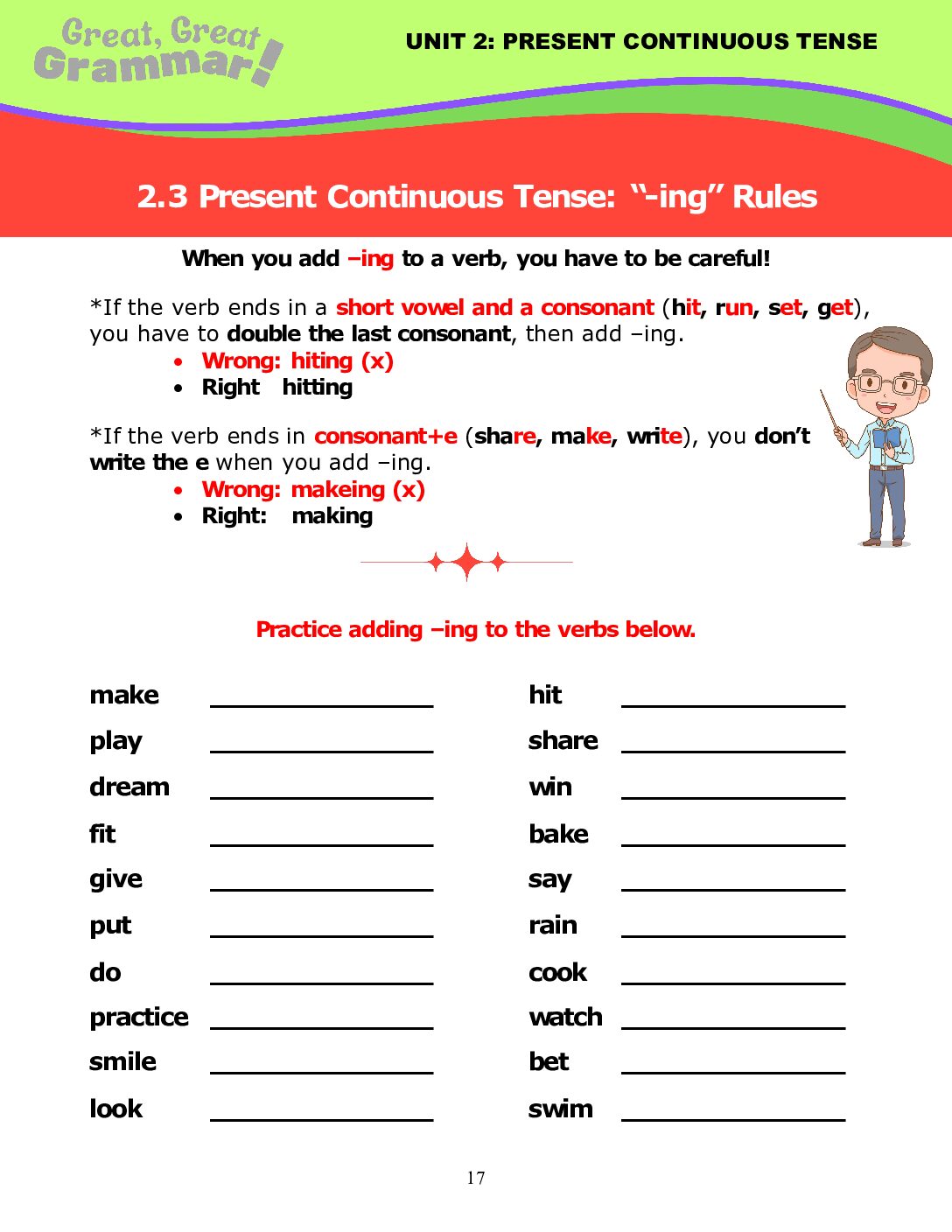This ESL grammar lesson focuses on spelling rules for adding -ing to verbs. Students then practice adding -ing to verbs and spelling them correctly.
ESL Grammar: Spelling Rules for Adding “-ing”
When adding “-ing” to verbs, follow these important spelling rules to ensure correct usage:
1. Adding “-ing” to Regular Verbs
For most regular verbs, simply add “-ing” to the base form of the verb.
Examples:
- walk → walking
- talk → talking
- play → playing
2. Verbs Ending in “-e”
For verbs that end in “-e,” drop the final “-e” and add “-ing.”
Examples:
- make → making
- dance → dancing
- drive → driving
3. One-Syllable Verbs with a Single Vowel and a Single Consonant
For one-syllable verbs that have a single vowel followed by a single consonant, double the final consonant before adding “-ing.”
Examples:
- run → running
- sit → sitting
- swim → swimming
The English grammar lesson below introduces the spelling rules for adding “-ing” to verbs when forming the present continuous tense, in a clear and simple manner that is easy for beginner English learners to understand. Our series of ESL grammar lessons on subjects and verbs introduce these concepts and reinforce them through helpful and instructive exercises.
This lesson is available for free download, and you can download many more English grammar lessons focusing on basic English tenses (present tense, present continuous tense, past tense, future tense) in our comprehensive, beginner-level ESL grammar textbook Great, Great Grammar! (Book 2: Tenses).

